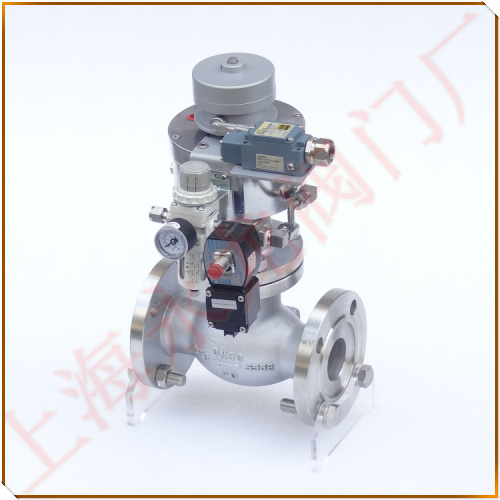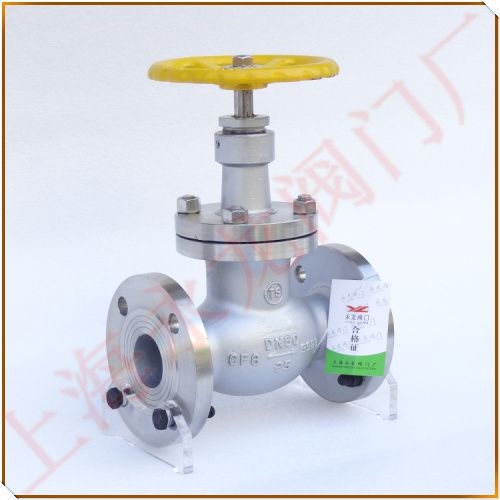Pressure test method of emergency shut-off valve and ammonia shut-off valve
Time: 2022-02-21 14:45:11 Source: Yonglong Valve Reading: zero second
Pressure test method of emergency shut-off valve and ammonia shut-off valve
The emergency cut-off valve and ammonia cut-off valve belong to industrial valves. Before leaving the factory, the valve strength test and valve sealing test shall be conducted on the valve pressure test bench. The common media for pressure test include water, air, nitrogen, etc., which can be packaged and put into storage only after passing the test. Generally, industrial valves are not subject to strength test when in use, but after repair, the valve body and bonnet or the valve body and bonnet with corrosion damage shall be subject to strength test. 20% of low pressure valves shall be randomly inspected, and all medium and high pressure valves shall be inspected and tested.

Emergency shut-off valve - Shanghai Yonglong Valve Factory
1、 Pressure test method of emergency shut-off valve and ammonia shut-off valve:
① Stop valve and Emergency shut-off valve The assembled valve is usually placed in the pressure test frame, the valve disc is opened, the medium is injected to the specified value, and the valve body and bonnet are checked for sweating and leakage. The strength test can also be carried out on a single piece.
② Only stop valve is used for sealing test. During the test, the stem of the stop valve is vertical, the valve disc is opened, the medium is introduced from the bottom end of the valve disc to the specified value, and the packing and gasket are checked; After passing the inspection, close the valve disc and open the other end to check whether there is leakage.
③ If the emergency cut-off valve (including electric emergency cut-off valve, pneumatic emergency cut-off valve and hydraulic emergency cut-off valve) is connected with Ammonia stop valve (including liquid ammonia stop valve and ammonia gas stop valve) When strength and tightness tests are required, strength tests can be conducted first, and then the pressure can be reduced to the specified value of tightness test, and the filler and gasket can be checked; Then close the valve flap and open the outlet end to check whether the sealing surface leaks.
II, Ball valve for ammonia Pressure test method:
The strength test of pneumatic ball valve and electric ball valve shall be conducted when the ball is half open.
① Sealing test of floating ammonia ball valve: keep the valve half open, introduce test medium at one end, and close the other end; Rotate the ball several times, open the closed end when the valve is closed, and check the sealing performance of the packing and gasket, without leakage. Then introduce the test medium from the other end and repeat the above test.
② Tightness test of fixed ammonia ball valve: before the test, rotate the ball valve for several times without load, and the fixed ball valve is closed, and introduce the test medium from one end to the specified value; Check the sealing performance of the inlet end with a pressure gauge. The accuracy of the pressure gauge is 0.5~1, and the range is 1.6 times of the test pressure. It is qualified if there is no pressure drop within the specified time; Then introduce the test medium from the other end and repeat the above test. Then, keep the valve half open, close both ends, and fill the cavity with medium. Check the packing and gasket under the test pressure, and there shall be no leakage.
3、 Pressure test method of ammonia check valve:
① Test status of ammonia check valve: the disc axis of the lift check valve is in a horizontal and vertical position; The channel axis and disc axis of the swing check valve are approximately parallel to the horizontal line.
② During the strength test, the test medium shall be introduced from the inlet end to the specified value, and the other end shall be closed. The valve body and bonnet shall be qualified if there is no leakage.
③ The test medium is introduced from the outlet end for the tightness test, and it is qualified if there is no leakage at the sealing surface, filler and gasket at the inlet end.

Ammonia stop valve - Shanghai Yonglong Valve Factory
4、 Pressure test method of liquid ammonia safety valve:
① The strength test of the safety valve for ammonia is conducted with water, just like other valves. When testing the lower part of the valve body, the pressure is introduced from the inlet I=I end, and the sealing surface is closed; When testing the upper part of the valve body and the bonnet, the pressure is introduced from the outlet El end and the other ends are closed. The valve body and bonnet are qualified if there is no leakage within the specified time.
② For sealing test and constant pressure test, the general medium used is: saturated steam is used as the test medium for the safety valve for steam; Valves for ammonia or other gases use air as the test medium; Valves for water and other non corrosive liquids use water as the test medium. Nitrogen is commonly used as the test medium for safety valves at some important positions.
③ The sealing test shall be conducted with the nominal pressure as the test pressure, and the number of times shall not be less than two. It is qualified if there is no leakage within the specified time. There are two leak detection methods: one is to seal the connections of the ammonia safety valve, and use butter to seal the tissue on the flange of the outlet El. If the tissue bulges, it is leaking, and if it does not, it is qualified; Second, use butter to seal thin plastic plates or other plates on the lower part of the outlet flange, fill water to seal the valve clack, and check that the water does not bubble. The number of constant pressure and reseating pressure tests of safety valve shall not be less than 3, and it is qualified if it meets the requirements.
④ See GB / T 12242 Safety Valve Performance Test Methods for various performance tests of safety valves.
[Recommended reading] / TECHNICAL ARTICLES

























